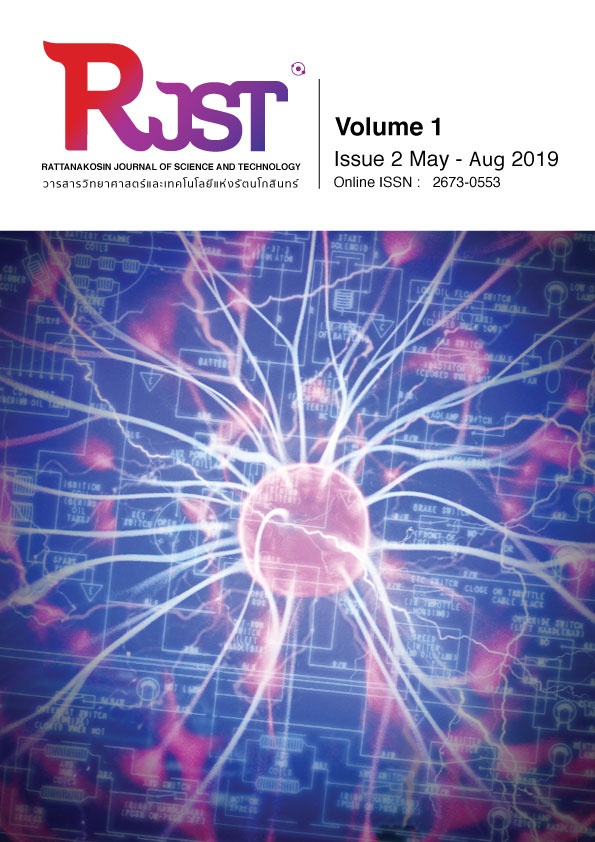The development of sound-absorber porous of sponge foam rubber with addition corn cob carbon
Main Article Content
Abstract
The synthetic foam rubber was reinforced by powder corn cob charcoal with 0, 5, 10 and 15 phr additional content. The foam rubber was estimated the physical properties such as density, hardness (Shore scale A), tensile strength (ASTM D638) and sound absorption coefficient (ASTM C 384 – 04). The foam rubber microstructure was investigated by stereo microscope and scanning electron microscopy (SEM). It was found that the density and hardness of rubbers foam were presented in the range of 0.13-0.33 g/cm3 and 1.1-11.1 Shore A, following, that were increased with high corn cob charcoal content. The results of tensile strength and modulus from foam rubber with vary corn cob charcoal addition, it was shown the like-brittle polymer and the increased high strength while the elastic modulus associated to reduce with increased charcoal contents. The sound absorption coefficient for the frequency between 700 to 6400 Hz of charcoal addition 0 and 5 phr were presented the range of value 0.52-0.83 and 0.35-0.98, according. Then, the charcoal additive 10 and 15 phr were presented the high frequency adsorption between 700 to 6400 Hz, sound coefficient 0.33-0.60. Finally, the addition 5 phr corn cob charcoal had high sound coefficient. The morphology of foam, the porosity size was reduced with high charcoal content. The charcoal particles were good distribution in rubber foam and supported the high adhesion of foam structure. Finally, the different foam structure was effect form charcoal corn cob particles content. It was effected the sound absorption coefficient behavior in rubber foam.
Article Details
The content within the published articles, including images and tables, is copyrighted by Rajamangala University of Technology Rattanakosin. Any use of the article's content, text, ideas, images, or tables for commercial purposes in various formats requires permission from the journal's editorial board.
Rajamangala University of Technology Rattanakosin permits the use and dissemination of article files under the condition that proper attribution to the journal is provided and the content is not used for commercial purposes.
The opinions and views expressed in the articles are solely those of the respective authors and are not associated with Rajamangala University of Technology Rattanakosin or other faculty members in the university. The authors bear full responsibility for the content of their articles, including any errors, and are responsible for the content and editorial review. The editorial board is not responsible for the content or views expressed in the articles.
References
[2] ประภัสสร รัตนไพบูลย์. (2558). การผลิตถ่านกัมมันต์จากซังข้าวโพดที่กระตุ้นด้วยน้ำและซิงค์คลอไรด์ร่วมกับรังสีไมโครเวฟ. วิทยานิพนธ์ระดับปริญญาตรี. สาขาฟิสิกส์ประยุกต์, มหาวิทยาลัยนเรศวร
[3] การยางแห่งประเทศไทย(ศูนย์วิจัยยาง) เว็บไซต์ : http://www.raot.co.th/ewt_news.php?nid=4567&filename=index สืบค้นวันที่ 7 มิ.ย. 2562
[4] American National Standard. (2004). Standard Test Method for Impedance and Absorption of Acoustical Materials by Impedance Tube Method C 384 – 04.
[5] Cowan, J.P. (1993). Handbook of Environmental Acoustics. John Wiley & Sons Inc. USA.
[6] Ballou, G.M. (2008). Handbook for Sound Engineers 4nd ed. Elsevier Inc. USA.
[7] Brown, R. (2002). Handbook of Polymer Testing. Rapra Technology Limited, United Kingdom.

